Constituting Injury
Law, Dispossession and Resistance in South Africa
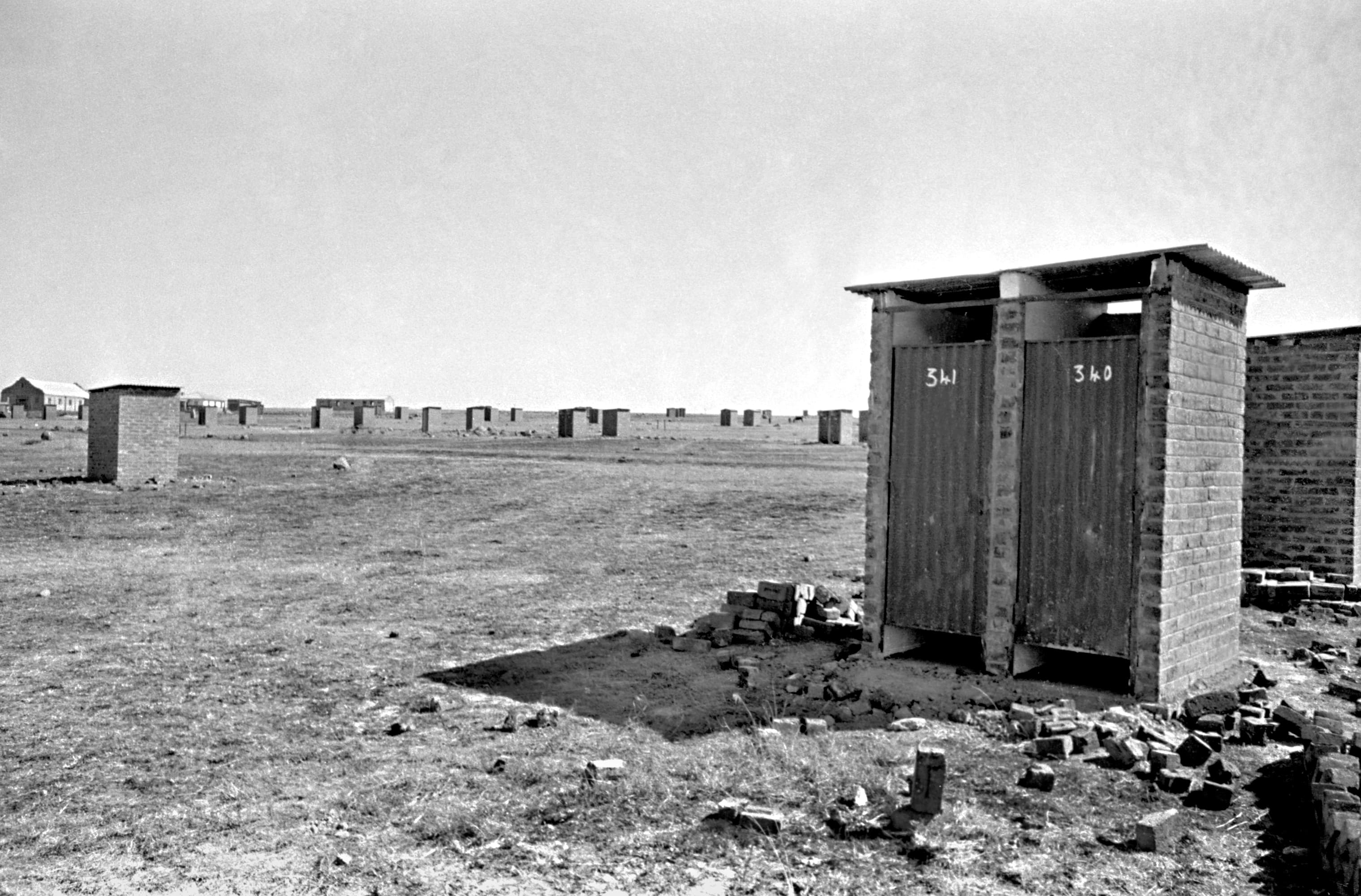
Segregation and Unification
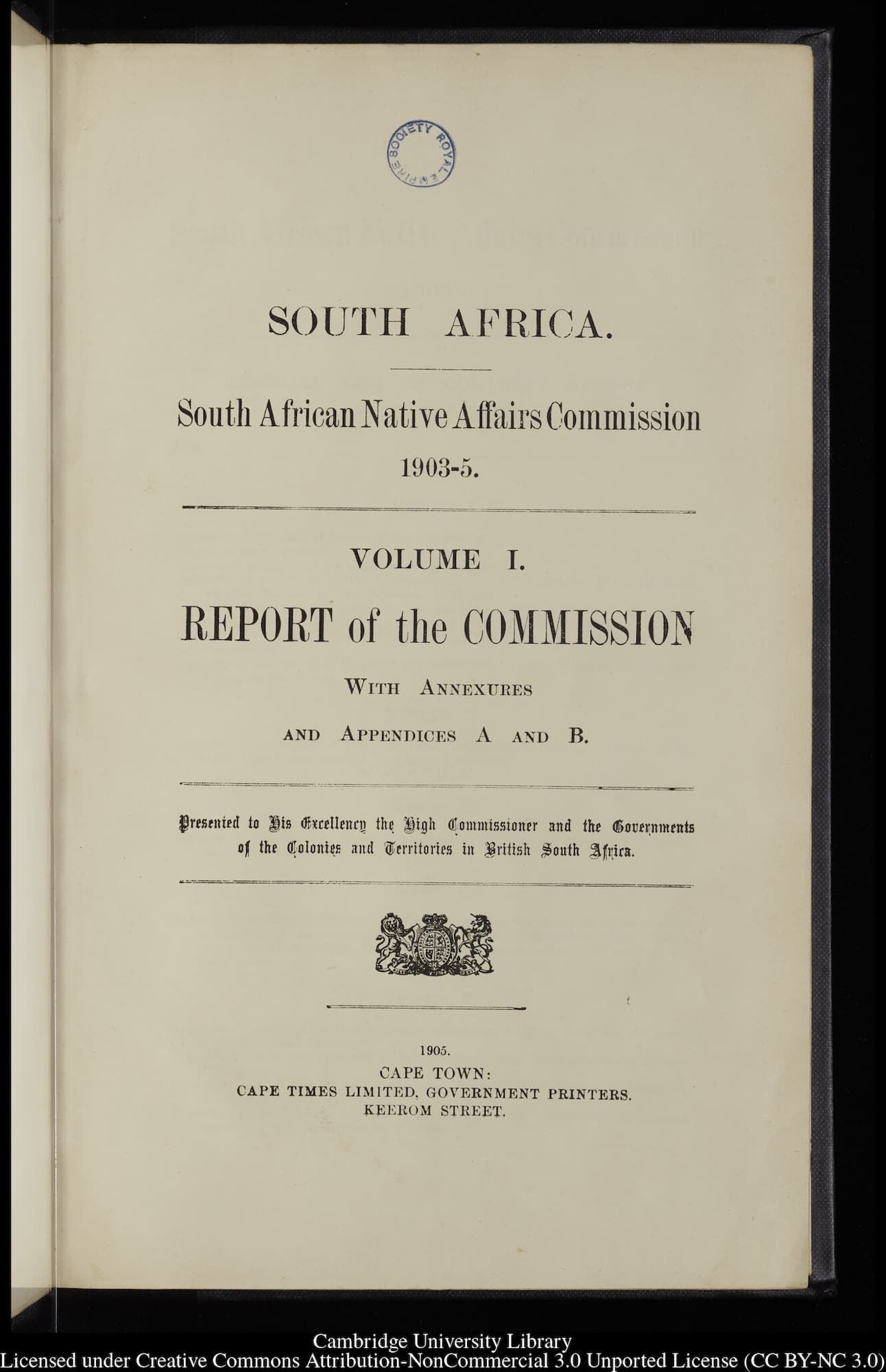
Segregation, as an administrative and social system of colonial and racial division, became solidified in South Africa in the early-twentieth century. British colonialism played a central role in this process.
Following the Boer War, the South African Native Affairs Commission (1903-1905) was appointed by the British High Commissioner for South Africa, Alfred Milner. The commission examined and provided recommendations for ‘the Native question’ with an eye to the unification of South Africa. The imperial agenda is clear within the report: “Uniformity of practice also should be aimed at, but reckoning must be taken of the process of evolution and the effect of changes upon people passing from semi-savage life to enlightenment” (1905, p.11)
The Commission report was the first official recommendation for a system of segregation across South Africa. Scholars have argued that it provided a blueprint for later segregation and apartheid legislation which dispossessed millions of South Africans (see Legassick, 1995; Magubane, 1996). Particularly notable are the Commission’s recommendations relating to
The full report can be viewed online at Cambridge Digital Library.
Available online via Cambridge Digital Library.
Reproduced by kind permission of the Syndics of Cambridge University Library.
Dispossession: The Natives Land Act of 1913
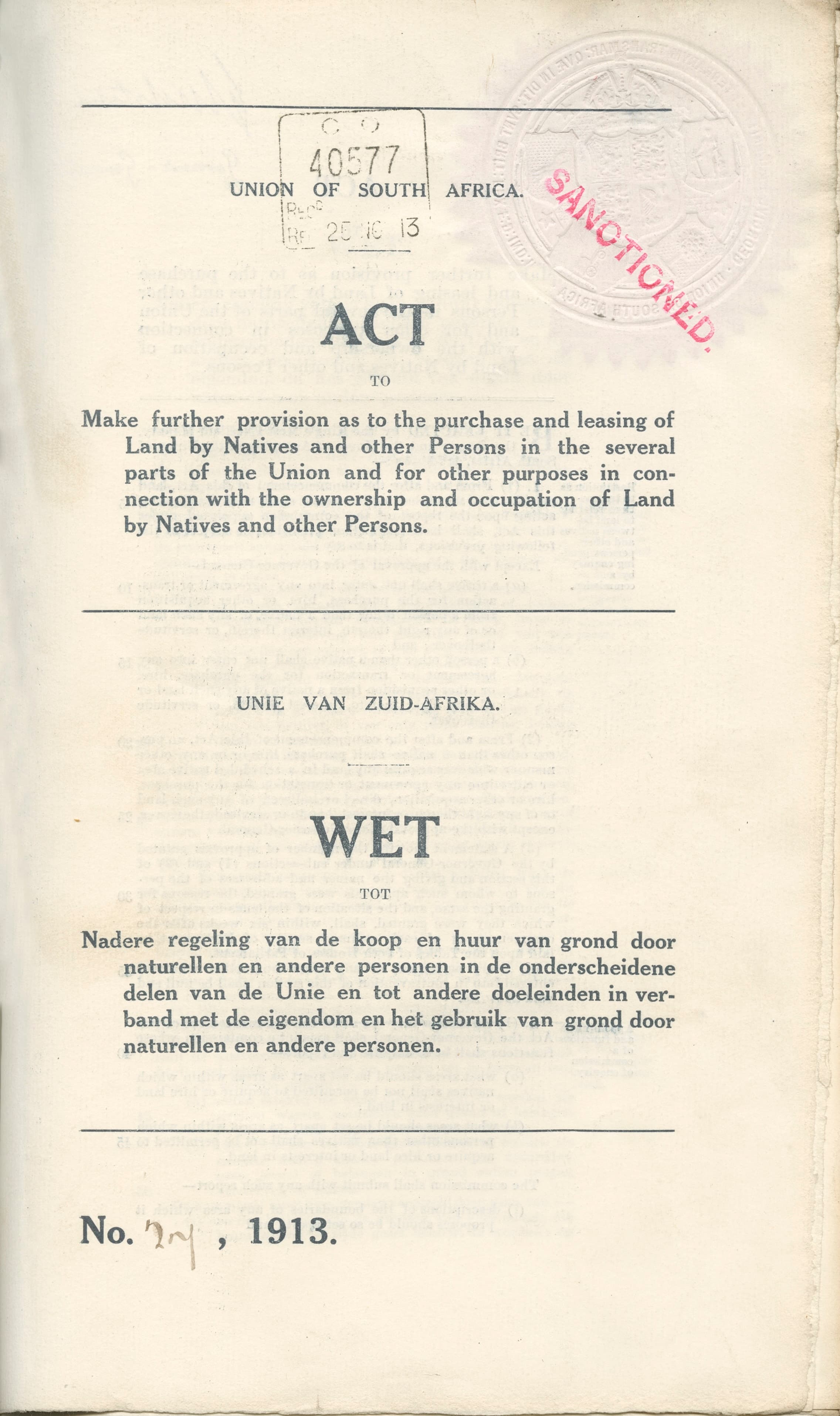
The Natives Land Act of 1913 is considered a watershed moment in South African history, consolidating colonial dispossession and paving the way for apartheid. The Act established territorial segregation across South Africa through the banning of “Native” ownership of land outside of designated areas, among other restrictions. The designated areas constituted only 7% of South Africa’s territory. This was extended to 13% by the Native Trust and Land Act in 1936. Scholars have contended that the Natives Land Act developed from the recommendations of the South African Native Affairs Commission (Legassick, 1995; Mugabane, 1996; Worden, 2012).
The impact of the 1913 Natives Land Act is evident in the resistance that followed, in addition to the system that it enabled, including the The centenary of this Act was marked in 2013. Scholarly discussions surrounding the centenary of the Act include reflections on its legacy (Feinberg, 2015; Walker, 2014).
Dispossession: Law and Resistance
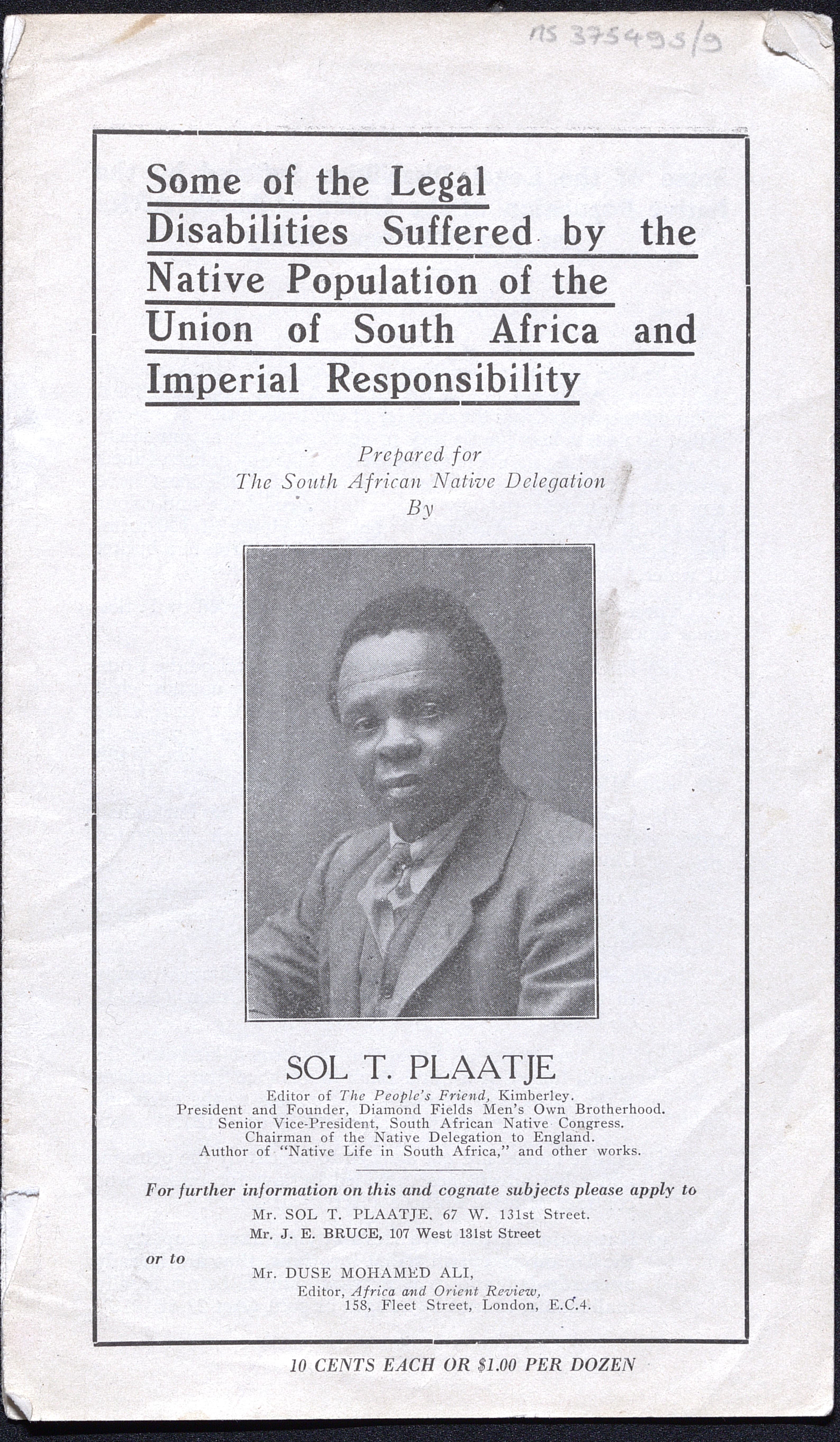
There is a long history of resistance to colonialism and segregation in South Africa. Among the resistance organisations formed in the early twentieth century, the South African Native National Congress (SANNC) was established in 1912 and renamed the African National Congress (ANC) in 1923. During this period, the SANNC was led by educated middle-class Black Africans, including several lawyers (Ngcukaitobi, 2018).
The SANNC responded strongly to the 1913 Natives Land Act. After unsuccessful domestic appeals, the SANNC sent two delegations to Great Britain (1914 and 1919) to directly petition the British Crown and Government, raising attention to Britain’s imperial role and responsibility. The pamphlet here was prepared for the South African Native Delegation by Sol T Plaatje. The pamphlet is not dated but was possibly published for the 1919 tour to the United Kingdom and North America (Willan, 1995). The pamphlet describes the plethora of “legal disabilities” experienced by the Black population in South Africa, including but not limited to the Natives Land Act.
The final page of the pamphlet includes an advertisement for Sol T. Plaatje’s account of the Natives Land Act and life in South Africa, , which was first published in 1916.
Use the arrows to view the full pamphlet.
Urban Control
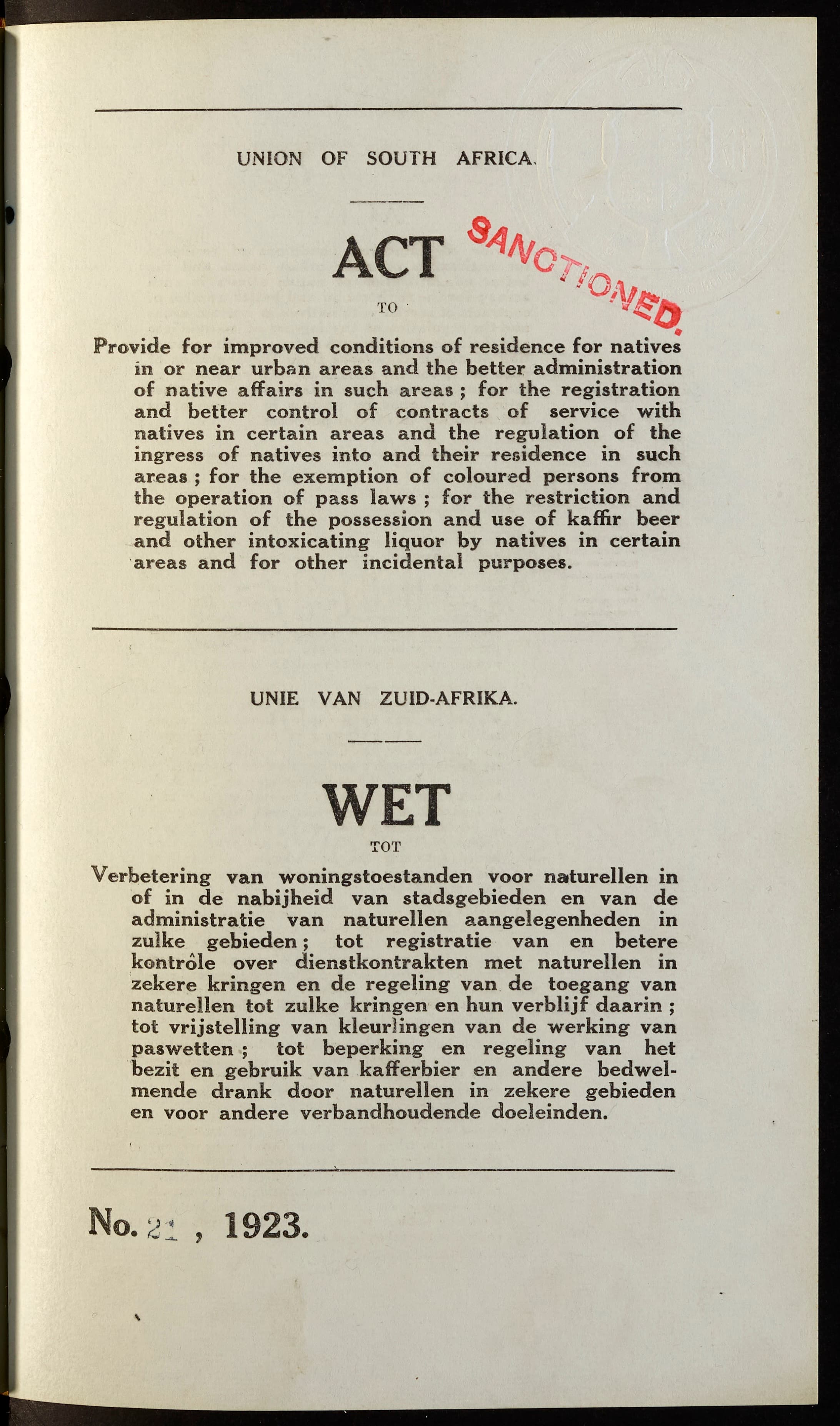
Laws to control the Black population in South Africa proliferated in the following decades. This included specific laws to control migration to urban areas, which served the segregationist idea that Black populations were to be only temporary residents in service to the permanent white urban population (Frankel, 1979).
The Natives (Urban Areas) Act of 1923 consolidated and extended power over Black African life. Use the arrows to view the first pages of the Act. Crucially, the Act empowered local authorities to strictly control entry to urban areas and the living conditions therein and gave the power to implement residential segregation. These powers were extended with later amendments and Acts, including the 1945 Natives (Urban Areas) Consolidation Act and the later 1952 Natives Law Amendment Act. Many aspects of life were strictly controlled including housing, land ownership, entry and residence, and beer brewing. These Acts further developed the complex pass laws for urban areas.
Passes As Slavery: Resistance
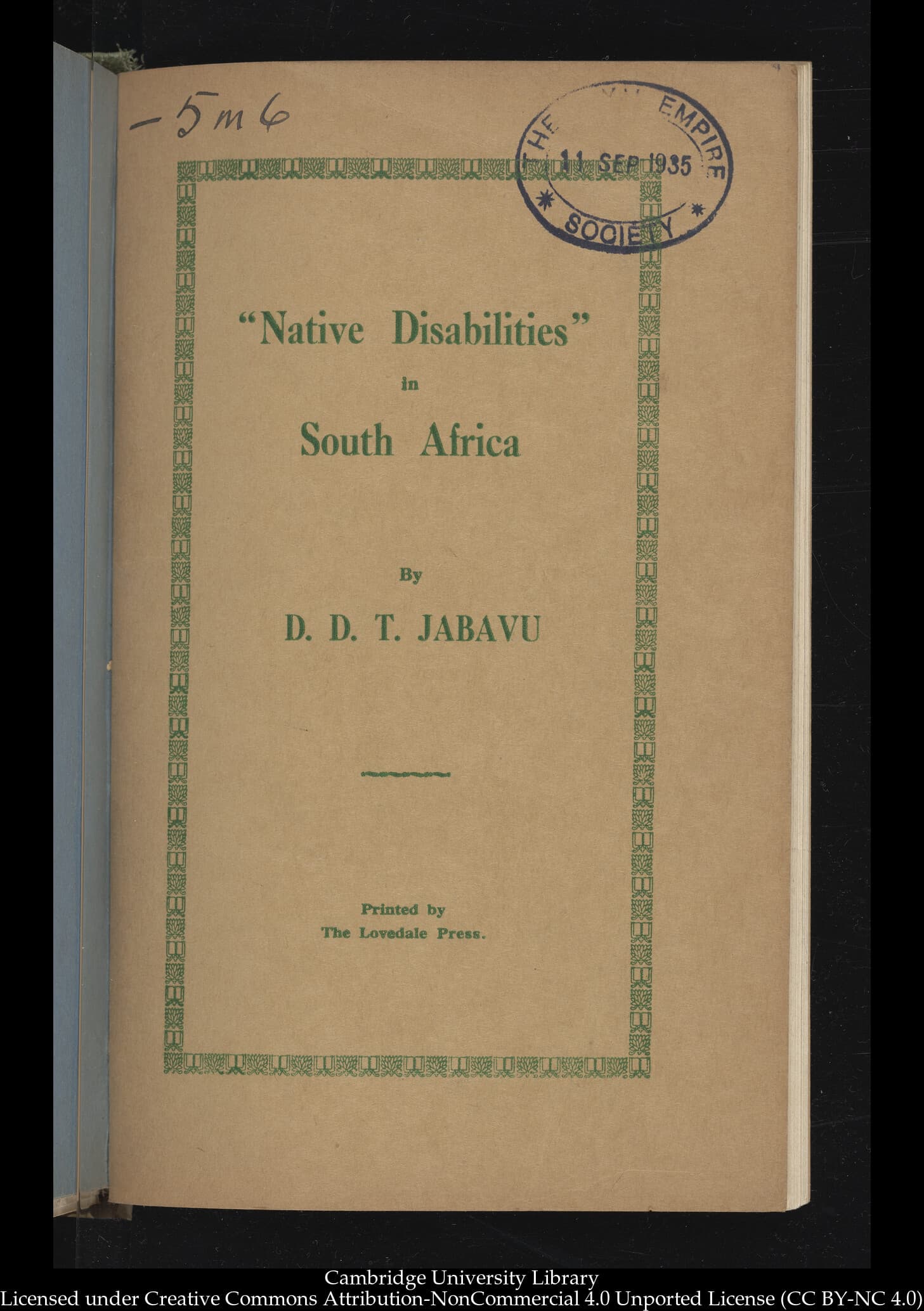
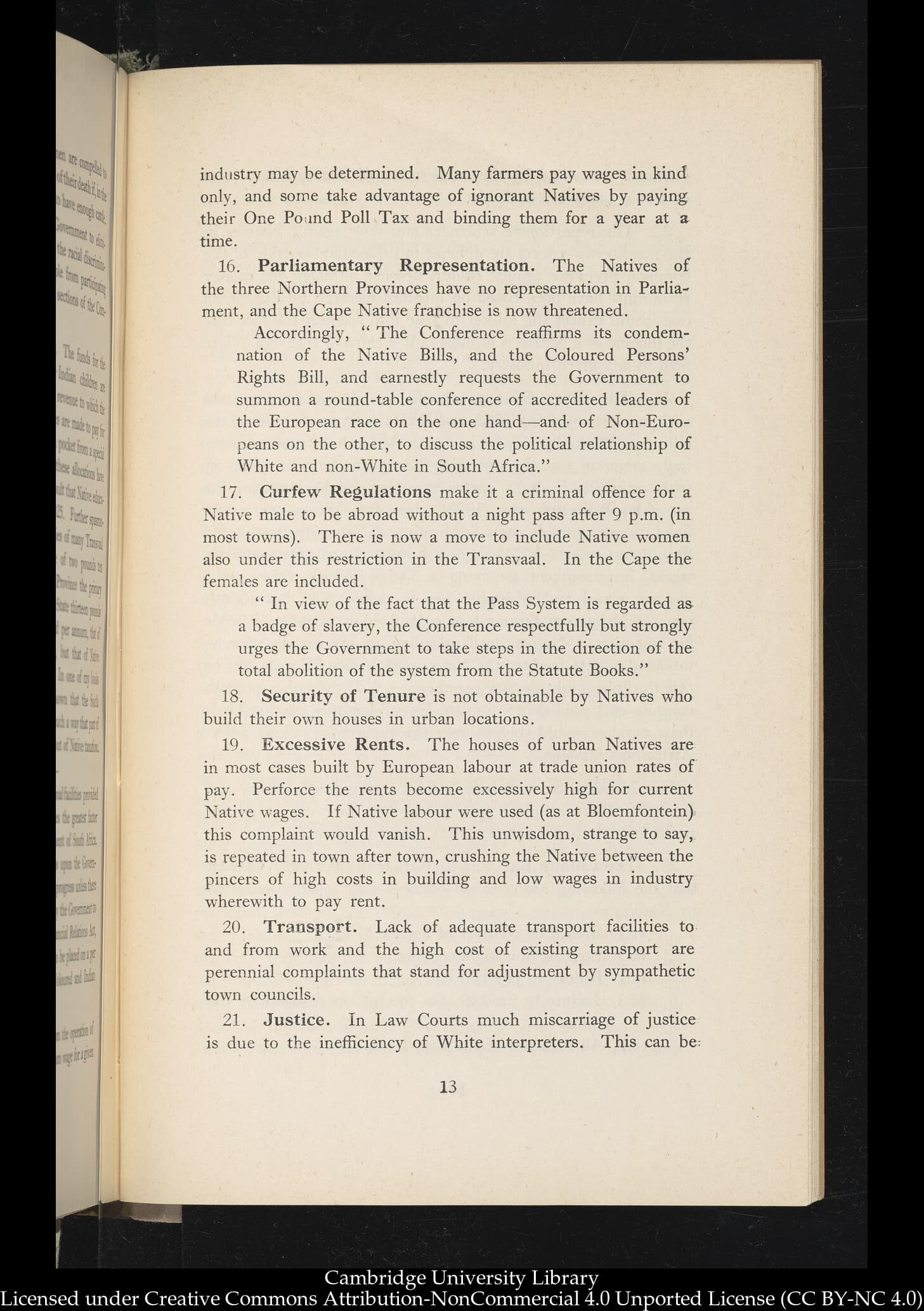
The pass system, with its oppressive laws and punishments, was a central focus of resistance. As this booklet shows, the pass system was considered “a badge of slavery” (see number 17, p.13).
The booklet was authored by D. D. T. Jabavu, a notable Black African leader in society and politics, who wrote extensively on the “native” experience in South Africa. The booklet was produced for international audiences, particularly British. In 1931, Jabavu undertook an international tour to expose the oppression experienced in South Africa, representing a wide conference of organisations including the ANC. The full booklet can be read online here.
Reproduced by kind permission of the Syndics of Cambridge University Library.